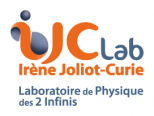
Einstein Telescope (ET) is a project of a future gravitational-wave (GW) detector designed to reach a sensitivity much better than the existing LIGO, Virgo and KAGRA instruments.
Located somewhere in Europe, ET will be built underground to be less sensitive to the (surface) seismic ground motion. While conceptually similar to the present GW detectors on the ground (the passing of a GW being detected by its effect on two laser beams interfering in a destructive way at the output of a Michelson interferometer), ET will benefit from several improvements to reach its ambitious sensitivity goal: much longer arms (10 km, to be compared to the 3 km-long Virgo arms); a cryogenic plant to cool its main mirrors down to few tens of kelvins in order to reduce the thermal noise; some quantum technologies to get even more stable laser beams; an improved isolation from the external environment, including some active noise mitigations (meaning to remove from the data noise contributions that are measured and monitored independently in real time); etc.

ET’s improved sensitivity will allow it to detect weaker GW signals: sources of a given type will be observed further away from Earth (that also means going backward in time to explore more deeply the cosmic history of the Universe), while transient sources already known today (the compact binary mergers) will be followed up on longer timescales. Therefore, the science that ET could probe is very rich: from fundamental physics to cosmology, by way of studying the population and the properties of black holes and neutron stars. This ambitious scientific program will benefit from observations from new facilities currently under construction or planned and there are prospects of building a new global network of GW detectors made of ET and Cosmic Explorer.
ET is currently in its design phase and the project has been included in the 2021 update of the roadmap of the European Strategy Forum on Research Infrastructures (ESFRI). The ET collaboration is taking shape, with the goal to tackle in parallel all the challenges that need to be addressed to turn this project into an actual experiment: site selection, instrument design, components R&D, preparation for the analysis of the future data, computing infrastructure and resources, etc. The IJCLab GW group is part of this international effort, with contributions to both the instrument and science areas.









